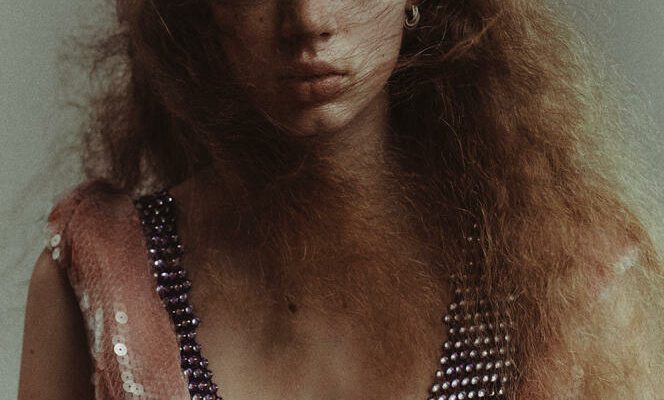En 1991, shot at the Oscars, Madonna poses, gaze determined and hands on hips, on the cover of Vanity Fair. If her posture borrows from the masculine repertoire – cowboy category – her dress plays on the codes of hyperfemininity. This spectacular sheath covered in sequins that perfectly matches its shape is the work of Bob Mackie, nicknamed the “sultan of sequins”, who signs here a tribute to a mythical outfit that he himself participated in creating: the one worn in 1962 through Marilyn Monroe for the ” happy birthday » sung to John Fitzgerald Kennedy. And put on again in June 2022 at the gala of the Metropolitan Museum of Art, in New York, by another icon of modern times: Kim Kardashian.
Summoning as much Liz Taylor in Cleopatra Whether Liberace at his piano or Diana Ross and the Supremes, the sequin is much more than a small piece of plastic. It is also a fetish carrying within it an imagination as brilliant as it is powerful. In the XXe century, it was the discovery of Tutankhamun’s tomb – and the fabrics adorned with gold coins that accompanied him in death – which gave new impetus to this brilliant little disc. For ordinary mortals, it is then made from gelatin and, as such, very sensitive to water or heat.
Made of wrap for the wrap
We owe its modern version (which will be perfected later) to an American, Herbert Lieberman, who had the idea of working with Kodak and borrowing their acetate film from film stock. Logic: the sequin is intimately linked to the image and the spectacle, feeding voraciously on women’s bodies. By Marlene Dietrich in Blond Venus to Marilyn Monroe in The Queens of the Music Hall via Jessica Rabbit in Who Framed Roger Rabbit? this embroidery of light adorns feminine curves with a sparkling halo that amplifies and materializes their sex appeal.
But the sequin has this particularity that it never shines as much as in excess, mischievously playing on its theatricality and its artificial side. In 2019, the New York Met (again) offered “Camp: Notes on Fashion”, an exhibition on the camp, concept from queer culture that escapes strict definitions but designates as much a way of seeing the world as a way of being and of which we could cite as characteristics humor, generosity, exaggeration and eccentricity. There was a creation all in sequins by Bob Mackie for Cher, diva whose most emblematic looks he signed, often halfway between the world of striptease and that of figure skating.
Among these outfits, the so-called “Dancing Flame” dress, made of red and gold sequins embracing the body of the wearer, a model then borrowed by Tina Turner, Beyoncé or RuPaul, the mother of all drag- cathode queens. In 2019, Andrew Bolton, chief curator of the fashion department of the American museum, insisted on the inseparable links between fashion and questions of identity, noting in passing that the camp flourished where the conservative right dominated. By the margin, the sequin also reminds us that if the fireflies have almost disappeared, there are still a few creatures that shine in the night.
